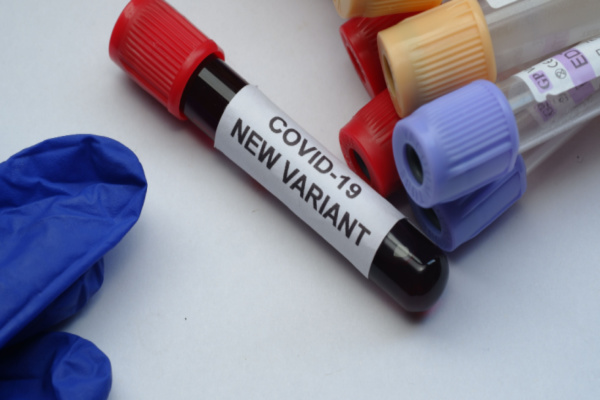A new variant of the virus that causes COVID-19 is rising to prominence in the U.S. as winter illness season approaches its peak: JN.1, yet another gift from the Omicron variant.
As Time magazine reports, JN.1 was first detected in the U.S. in September but spread slowly at first. In recent weeks, however, it has accounted for a growing percentage of test samples sequenced by labs affiliated with the U.S. Centers for Disease Control and Prevention (CDC), surpassing 20% during the two-week period ending Dec. 9. By some projections, it will be responsible for at least half of new infections in the U.S. before December ends.
The World Health Organization (WHO) on Dec. 19 declared JN.1 a variant of interest due to its “rapidly increasing spread.” But the agency has not labeled JN.1 a “variant of concern“—that is, a new strain of the SARS-CoV-2 virus with potential for increased severity; decreased vaccine effectiveness; or substantial impacts on health care delivery.
Here’s what you need to know about JN.1 to keep it from Grinching your holiday season.
Is JN.1 more infectious or severe than other SARS-CoV-2 variants?
JN.1 is closely related to BA.2.86, a fellow Omicron descendent that first popped up in the U.S. this past summer. The two variants are nearly identical, according to the CDC, except for a single difference in their spike proteins, the part of the virus that allows it to invade human cells.
The fact that JN.1 is responsible for a growing portion of infections suggests it is either more contagious or better at getting past our bodies’ immune defenses than previous iterations of the virus, the CDC says. But right now there is no evidence that it causes more severe disease than other viral strains, even though it may cause a bump in transmission, the CDC says. Primary symptoms are likely to be the same as those from previous variants: a sore or scratchy throat, fatigue, headache, congestion, coughing, and fever.
Do vaccines, tests, and treatments work against JN.1?
So far, the signs are good, in that yes, COVID-19 tests and treatments are expected to be effective against JN.1, the CDC says. And even though the latest COVID-19 booster shot was designed to target the XBB.1.5 variant, preliminary research suggests it also generates antibodies that work against JN.1, albeit fewer of them. (As ever, just as with any virus, vaccines will not totally block JN.1 infections, but should significantly reduce the likelihood of death and severe disease.)
In a Dec. 13 statement, WHO’s expert COVID-19 vaccine advisory group recommended sticking with the current XBB.1.5 vaccines, since they seem to provide at least some cross protection.
Will JN.1 cause a COVID-19 surge in the U.S.?
The CDC no longer logs every single COVID-19 diagnosis in the U.S., but other indicators of disease are up. Wastewater surveillance data suggest there’s a lot of COVID-19 going around, particularly in the Northeast. Hospitalizations are also on the rise, although far fewer people are being admitted than at this time last year. Death rates are currently stable, though they tend to lag slightly behind hospitalizations.
It’s too soon to say whether JN.1 will cause a significant spike in cases, although its ascendance during the busy holiday travel and gathering season could fuel increased transmission. “Right now, we do not know to what extent JN.1 may be contributing to these increases or possible increases through the rest of December like those seen in previous years,” the CDC wrote in a Dec. 8 update on the variant.
Your Best Defense against JN.1
The best defenses against JN.1—and other variants of SARS-CoV-2—remain getting vaccinated, masking in crowded indoor areas, and limiting exposure to people who may have been infected.
—
Photo Credit: wisely / Shutterstock.com
